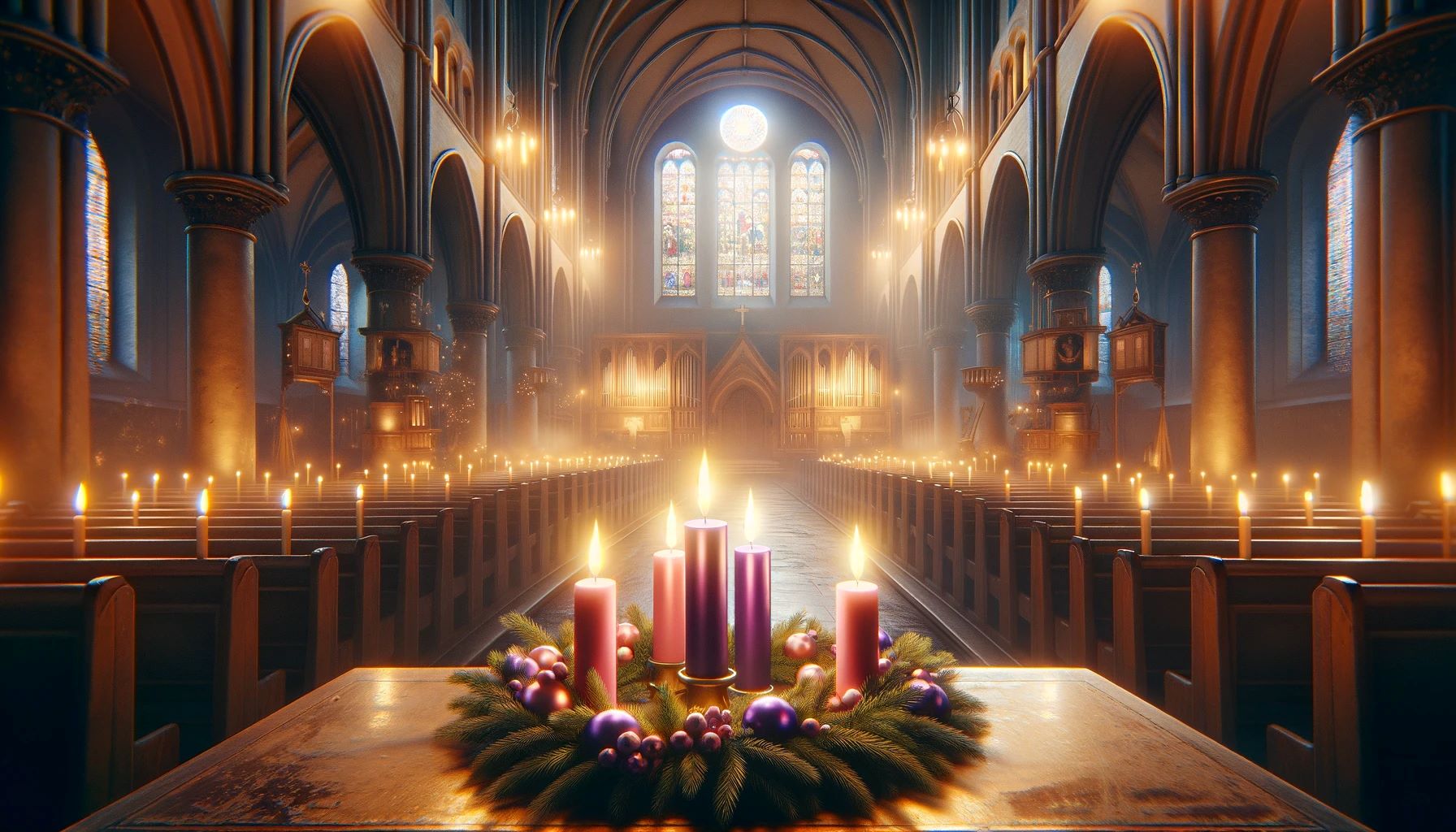Home>Christian Videos>Bible Stories>What Are The Five Gospels


Bible Stories
What Are The Five Gospels
Published: March 6, 2024
Peter Smith, Editorial Director at Christian.net, combines deep insights into faith, politics, and culture to lead content creation that resonates widely. Awarded for his contributions to religious discourse, he previously headed a major organization for religious communicators, enhancing dialogue on faith's societal impacts.
Discover the most captivating and enlightening Bible stories in "What Are the Five Gospels." Explore the timeless wisdom and teachings within these sacred texts. Unlock the power of the gospel narratives today!
(Many of the links in this article redirect to a specific reviewed product. Your purchase of these products through affiliate links helps to generate commission for Christian.net, at no extra cost. Learn more)
Table of Contents
Introduction
So, you may have heard about the four Gospels in the New Testament, but did you know that there are actually more than four? That's right! In addition to Matthew, Mark, Luke, and John, there are several other ancient texts that claim to offer insights into the life and teachings of Jesus. These texts are often referred to as the "lost Gospels" and have sparked a great deal of interest and debate among scholars and religious enthusiasts. In this article, we'll take a closer look at the five Gospels that are not included in the New Testament and explore what makes them unique. Let's dive in and uncover the fascinating world of these lesser-known Gospels!
Read more: What Do The Four Gospels Represent?
The Gospel of Thomas
The Gospel of Thomas is a collection of sayings attributed to Jesus, believed to have been written in the 2nd century. Unlike the narrative style of the canonical Gospels, the Gospel of Thomas consists of 114 sayings or logia, many of which are attributed directly to Jesus. This text offers a unique perspective on Jesus' teachings and is often considered to be a valuable source for understanding early Christian beliefs and practices. The Gospel of Thomas is not a narrative of Jesus' life, death, and resurrection like the four Gospels in the New Testament, but rather a collection of wisdom sayings that are thought-provoking and spiritually enriching. This Gospel emphasizes the importance of self-discovery, inner wisdom, and the search for truth within oneself. It presents Jesus as a wisdom teacher, guiding his followers to seek enlightenment and spiritual awakening through introspection and self-realization.
Key Characteristics of the Gospel of Thomas:
- Sayings of Jesus: The Gospel of Thomas primarily consists of the sayings of Jesus, offering a glimpse into his teachings and wisdom.
- Emphasis on Inner Wisdom: Unlike the canonical Gospels, the Gospel of Thomas places a strong emphasis on the inner spiritual journey and the discovery of truth within oneself.
- Non-Narrative Format: This Gospel does not follow a narrative structure like the New Testament Gospels but instead presents a collection of standalone sayings and teachings.
- Influence on Early Christianity: The Gospel of Thomas has been a subject of scholarly interest due to its potential influence on early Christian thought and the diversity of beliefs within the early Christian community.
The Gospel of Thomas provides a thought-provoking perspective on the teachings of Jesus, inviting readers to delve into the depths of their own spirituality and seek wisdom within. Its unique format and emphasis on inner enlightenment make it a significant and intriguing addition to the study of early Christian literature.
The Gospel of Mary
The Gospel of Mary, also known as the Gospel of Mary Magdalene, is an ancient text that offers a portrayal of Mary Magdalene as a prominent disciple of Jesus. This gospel, believed to have been composed in the 2nd century, presents Mary Magdalene as a key figure in the early Christian movement, emphasizing her close relationship with Jesus and her role as a teacher and spiritual leader. The text contains dialogues between Mary and the other disciples, shedding light on her unique insights into Jesus' teachings and the nature of spiritual enlightenment.
Key Characteristics of the Gospel of Mary:
-
Prominence of Mary Magdalene: Unlike the canonical Gospels, the Gospel of Mary elevates the role of Mary Magdalene, portraying her as a central figure in the transmission of Jesus' teachings.
-
Revelation of Secret Knowledge: This gospel contains passages that suggest Mary Magdalene received special revelations and knowledge from Jesus, which were not shared with the other disciples. This emphasis on hidden wisdom and esoteric teachings adds a mystical dimension to the text.
-
Contemplative and Spiritual Themes: The Gospel of Mary delves into contemplative and spiritual themes, exploring the nature of the soul, the pursuit of inner peace, and the significance of spiritual insight.
-
Challenges Traditional Gender Roles: By presenting Mary Magdalene as a prominent disciple and spiritual authority, the Gospel of Mary challenges traditional gender roles within the early Christian community, offering a more inclusive and diverse representation of leadership and discipleship.
The Gospel of Mary provides a unique perspective on the role of Mary Magdalene and her contributions to the early Christian movement. Its portrayal of Mary as a recipient of hidden teachings and a spiritual guide offers a compelling alternative to the traditional narratives found in the New Testament Gospels. This text has sparked significant interest among scholars and readers seeking to explore the diverse expressions of early Christian beliefs and the evolving roles of key figures within the movement.
Read more: What Are The Four Gospels?
The Gospel of Peter
The Gospel of Peter is an ancient text that provides a narrative account of the crucifixion and resurrection of Jesus. Although it is not included in the New Testament, this gospel offers a detailed and vivid portrayal of the events surrounding Jesus' death and resurrection, presenting unique perspectives on the passion story. The text is believed to have been composed in the mid-2nd century and was highly regarded by some early Christian communities. The Gospel of Peter includes dramatic descriptions of supernatural occurrences and emphasizes the divine nature of Jesus, portraying him as a transcendent and awe-inspiring figure.
Key Characteristics of the Gospel of Peter:
-
Dramatic Crucifixion and Resurrection Narratives: The Gospel of Peter features elaborate and dramatic accounts of Jesus' crucifixion and resurrection, depicting supernatural phenomena and cosmic events that accompany these pivotal moments in Christian theology.
-
Emphasis on Jesus' Divine Nature: This gospel underscores the divine nature of Jesus, portraying him as a transcendent and powerful figure whose true identity is revealed through miraculous signs and wonders.
-
Inclusion of Unique Details: The Gospel of Peter includes details not found in the canonical Gospels, offering alternative perspectives on the events of Jesus' passion and the reactions of those present at the crucifixion and resurrection.
-
Reflection of Early Christian Beliefs: Through its narrative style and theological emphasis, the Gospel of Peter reflects the evolving beliefs and interpretations of Jesus' life, death, and resurrection within the diverse landscape of early Christianity.
The Gospel of Peter presents a compelling and imaginative retelling of the crucifixion and resurrection, offering readers a glimpse into the diverse expressions of early Christian faith and the rich tapestry of narratives that contributed to the formation of Christian tradition. Its vivid descriptions and theological themes have sparked scholarly interest and continue to inspire discussions about the multifaceted nature of early Christian literature.
The Gospel of Judas
The Gospel of Judas is an intriguing ancient text that presents a controversial and thought-provoking portrayal of Judas Iscariot, one of Jesus' disciples. This gospel, believed to have been composed in the 2nd century, offers a unique perspective on the betrayal of Jesus and the role of Judas within the narrative of Christian salvation. Unlike the traditional portrayal of Judas as a villainous figure, the Gospel of Judas presents him as a key participant in a divine plan, entrusted with the sacred task of facilitating Jesus' crucifixion. The text contains dialogues between Jesus and Judas, shedding light on the deeper spiritual truths and mystical revelations that underpin the events of Jesus' betrayal and crucifixion.
Key Characteristics of the Gospel of Judas:
-
Redemption of Judas: This gospel challenges the conventional understanding of Judas as a traitor and instead presents him as a chosen instrument in fulfilling a divine purpose. It offers a reinterpretation of Judas' actions, framing them as part of a larger cosmic design aimed at bringing about the salvation of humanity.
-
Revelation of Secret Knowledge: The Gospel of Judas contains passages that suggest Jesus shared esoteric teachings with Judas, revealing hidden mysteries and spiritual insights that were not disclosed to the other disciples. This emphasis on secret knowledge adds a mystical and enigmatic dimension to the text.
-
Exploration of Gnostic Themes: The Gospel of Judas reflects elements of Gnostic thought, emphasizing the importance of spiritual enlightenment, the transcendence of material existence, and the pursuit of divine wisdom. It offers a distinctive perspective on the nature of reality and the complexities of human existence.
-
Challenges Traditional Narrative: By presenting Judas in a more nuanced and complex light, the Gospel of Judas challenges the traditional narrative of Jesus' betrayal, encouraging readers to reconsider the motivations and implications of Judas' actions within the broader context of divine providence.
The Gospel of Judas invites readers to reexamine the character of Judas Iscariot and contemplate the deeper theological and philosophical implications of his role in the events surrounding Jesus' crucifixion. Its portrayal of Judas as a participant in a divine drama and the recipient of hidden knowledge offers a provocative and enigmatic perspective on the complexities of human agency and the unfolding of divine purposes. This text has sparked significant debate and scholarly inquiry, contributing to ongoing discussions about the diversity of early Christian beliefs and the multifaceted nature of the Christian tradition.














